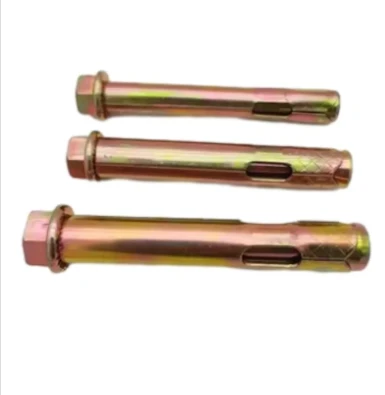Жел . 06, 2024 20:13 Back to list
metric hex screw sizes
Understanding Metric Hex Screw Sizes A Comprehensive Guide
When it comes to construction, engineering, and various mechanical applications, the importance of screws cannot be understated. Among the myriad types of screws available today, metric hex screws stand out due to their versatility and reliability. This article aims to provide a comprehensive overview of metric hex screw sizes, including their dimensions, applications, and significance in different fields.
What Are Metric Hex Screws?
Metric hex screws are a type of fastener characterized by their hexagonal heads, which allow for easy tightening and loosening using a wrench or socket. The metric designation refers to the sizing system used, which is based on the International System of Units (SI). This system uses millimeters (mm) to specify screw sizes, providing a standardized method for identifying dimensions, making them widely adopted across various industries.
Common Metric Hex Screw Sizes
Metric hex screws come in a range of sizes, with diameters typically ranging from 1.6 mm to 24 mm or more. Each screw size corresponds to a specific thread pitch and length. Here are some common metric sizes
1. M3 Diameter of 3 mm, often used in small electronic devices. 2. M4 Diameter of 4 mm, frequently found in machinery and equipment. 3. M5 Diameter of 5 mm, commonly used in automotive applications. 4. M6 Diameter of 6 mm, prevalent in various engineering projects. 5. M8 Diameter of 8 mm, suitable for structural applications. 6. M10 Diameter of 10 mm, used in heavy-duty machinery. 7. M12 Diameter of 12 mm, often seen in construction and large-scale projects.
Each of these sizes can also vary in length, thread type (fine or coarse), and material, which impacts their strength and suitability for different applications.
Thread Pitch
In addition to diameter, the thread pitch of a metric hex screw is crucial. The thread pitch refers to the distance between the threads and is measured in millimeters. Standard metric screws have a coarse thread pitch, but fine-thread variants are also available. For instance, an M6 screw with a coarse thread pitch has a distance of 1.0 mm between threads, whereas an M6 screw with a fine thread pitch may have a distance of 0.75 mm.
metric hex screw sizes

Materials and Coatings
Metric hex screws can be made from various materials, including steel, stainless steel, titanium, and plastic. The choice of material affects the screw's strength, corrosion resistance, and weight. For outdoor applications, stainless steel screws are often preferred due to their resistance to rust and environmental wear. Additionally, screws may be coated with materials such as zinc or black oxide to enhance corrosion resistance and aesthetics.
Applications
Metric hex screws are utilized across numerous industries, including
- Automotive Used in various components from engines to chassis assembly. - Construction Commonly used to secure structural elements. - Manufacturing Essential in machinery assembly and product manufacturing. - Electronics Employed in the assembly of devices ranging from computers to appliances.
Due to their strength and reliability, these screws are especially important in applications where safety and structural integrity are critical.
Importance of Accurate Sizing
When using metric hex screws, accurate sizing is paramount. Using the wrong size can lead to issues such as stripped threads, structural failure, or component malfunction. It is essential to consult specifications and standards to ensure that the correct screw size, thread pitch, and material are selected for a given application.
Conclusion
Metric hex screws play a vital role in numerous industries, demonstrating their versatility and reliability in securing components. Understanding the various sizes, thread pitches, materials, and applications of these screws is essential for professionals in engineering, construction, and manufacturing. As technology continues to advance, the use of metric hex screws will likely become even more widespread, making it important for individuals to stay informed about the appropriate choices for their specific needs. Whether you’re a seasoned engineer or a DIY enthusiast, grasping the essentials of metric hex screw sizes will enhance your work and ensure successful outcomes in your projects.
-
The Ubiquitous Reach of DIN934 in Application Realms
NewsMay.16,2025
-
Exploring Different Bolt Types
NewsMay.16,2025
-
Cracking the Code of Sleeve Anchor Mastery
NewsMay.16,2025
-
Clamp Design Principles,Types and Innovations
NewsMay.16,2025
-
Artistry Inspired by the Humble Anchor Bolt
NewsMay.16,2025
-
A Deep Dive into Screw Types
NewsMay.16,2025


